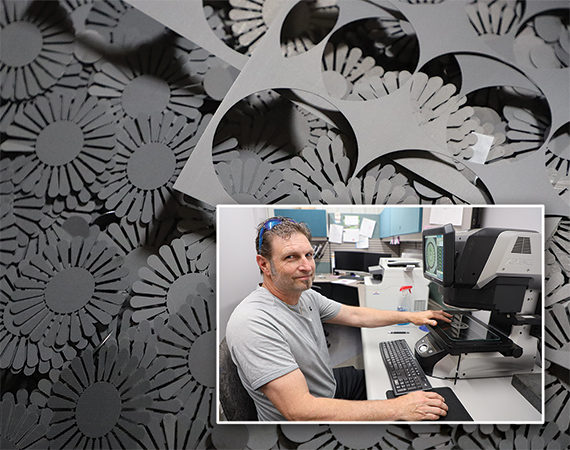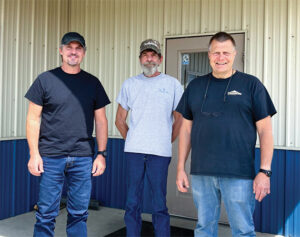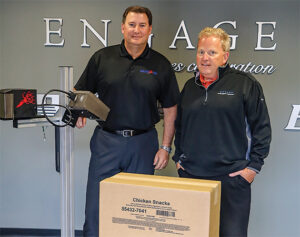For 15 years, Justin Oestreich raced open-wheel dirt cars under the name “A-Strike,” which sounds like his last name. He built or modified his cars to make them faster and more responsive and, along the way, he won many races on the midwestern circuit. His knowledge of cars and driving helped him build better laser-cutting systems for his company, Nowthen-based Ace Laser Technologies, Inc.
“When I look at a laser machine, I look at it the same way that I looked at a car,” he says. Issues like how to change direction, handle corners, or distribute weight are top of mind. “It’s just mechanics and physics and the way that weight moves around. Even when we are setting up jobs, we have to keep that in mind.”
That kind of attention to detail differentiates Ace Laser from its competition, he says. “We will dissect the program down to each little line and arc and adjust where it needs to be instead of adjusting the whole part.”
This precision approach has made Ace Laser a go-to shop for electric motor laminations, precisely cut thin metal sheets that are stacked to form the core of an electric motor’s stator and rotor to increase efficiency. After 25 years in business, Ace Laser fills a niche in the market with many of its clients serving the defense and aerospace industries where precision is paramount.
The company recently earned its ISO 9001 certification through Enterprise Minnesota, a step that sets it up for future growth. “They knocked it out of the park,” says James Thomas, a business growth consultant for Enterprise Minnesota, who assisted Ace Laser in the certification process.
Oestreich started Ace Laser in a pole barn on his home property in 1999. He’d worked as a laser operator and engineer for several years, and in that time, had learned every aspect of laser cutting technology, from system structure and maintenance to programming and AutoCAD. “I thought, ‘Why don’t I just do this for myself?’” he says.
Using a $110,000 Small Business Administration loan, Oestreich bought a used laser system and other equipment to set up shop. He continued to buy and sell laser equipment to allow him to build and repair the systems of his design, once buying three laser systems off a truck to use for repairs. Currently, the company has three laser systems employing 11 lasers, with a fourth system due to come online later this year. Oestreich still keeps plenty of spare parts in the shop — he’s moved out of the pole barn to rented industrial space — in case a system breaks down or he needs to build a spare during busy times.
While Oestreich’s original business plan was to work mostly on plastics and nonmetals, a chance to make metal motor laminations for St. Paul-based LCS Company changed the direction of Ace Laser. “At first it was very difficult to produce them because the accuracy is really tight, the tolerances are really tight,” he says. “It’s a very detailed part, but we dialed in our process and we got good at it. And, they just buried us with work over the years.”
Ace Laser can produce laminations with tolerances of .001 inch now. “It is a more stressful type of work because everything has to be perfect,” Oestreich says, “but it sure beats having to lift heavy sheets of metal onto the lasers.”
Laser fabrication of laminations is now 90% of the business. Order size has also grown recently, Oestreich says. “A large order used to be 5,000 parts; now it’s 100,000.” The company has sales around $1.5 million a year and six employees. Ace Laser’s warranty program is “one of the best I’ve seen,” Thomas says. “They really go out of their way to make sure the customer is satisfied with the products.”
Getting the ISO 9001 certification was an important step for the company, Oestreich says. More clients expect the certification and the process provides a good checks-and-balances system for employees. While he was apprehensive about the ISO audit and the amount of work required for the certification, the process was beneficial. It reinforced the way the company already operates.
“I think our processes were already solid, as far as not having any loopholes and documenting what we do,” he says. “If there is something missing from your process, it’s a good way to find it.” The most significant change the company made through the certification was improving its training procedures and how they are documented.
“At some point I’m going to retire,” Oestreich says. “An ISO certification in place makes that transition smoother when the time comes because it’s not all in my head. It’s documented so that anyone can follow the procedures.”
With the ISO in place, the company is now pursuing an International Traffic in Arms Regulations (ITAR) registration, which will assist with the defense work that it is doing. The company is replacing its first CO2 laser with more updated and less bulky technology.
“Once I get to that point, I’d like to step back from shop work and focus more on sales,” he says.
Does that mean he’ll be spending more time at the racetrack? No. Oestreich sold his car and left racing three years ago. “When you’re racing, it’s what you do every weekend,” he says. “Now I can go fishing or out on the boat once in a while.”
Return to the Fall 2024 issue of Enterprise Minnesota® magazine.


